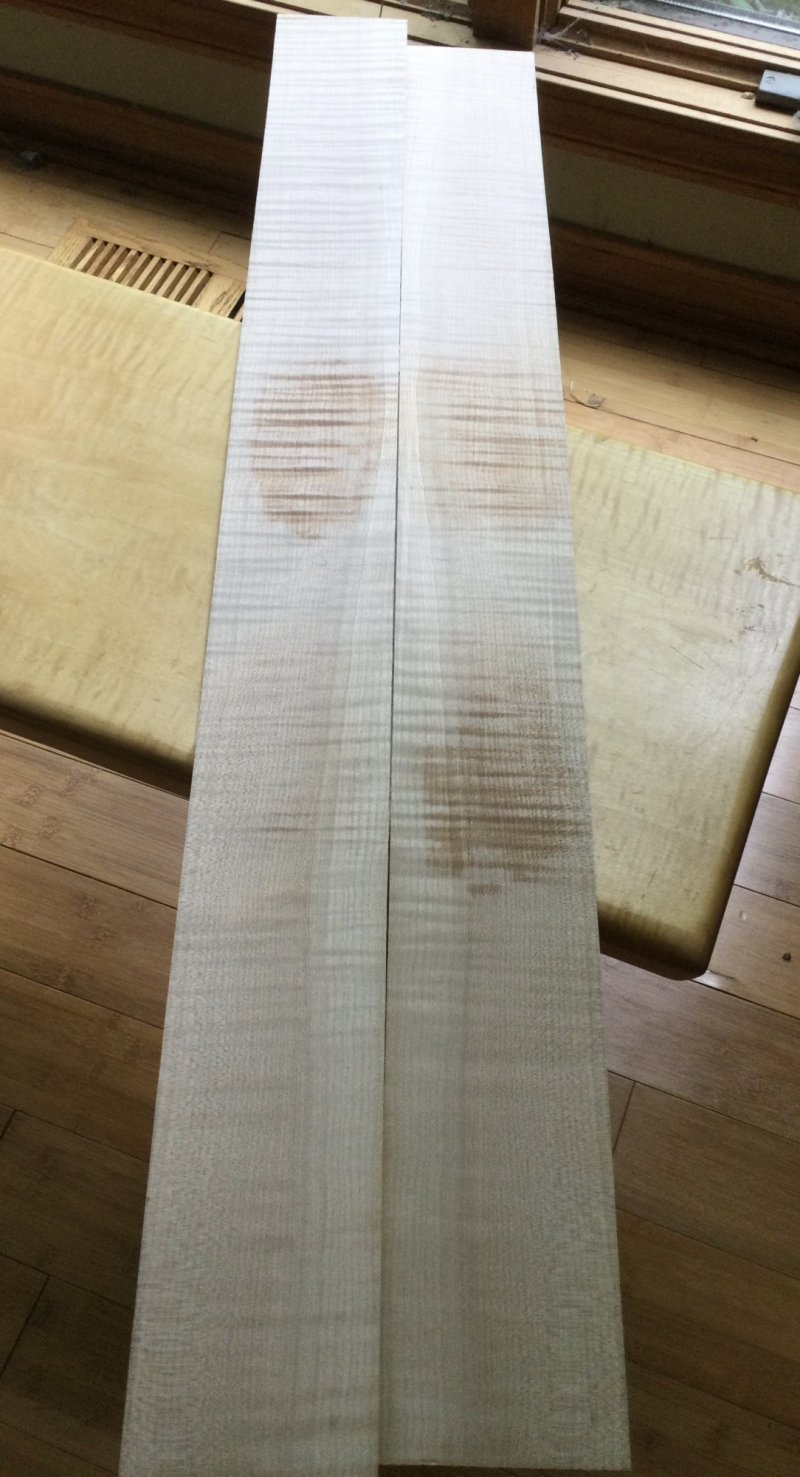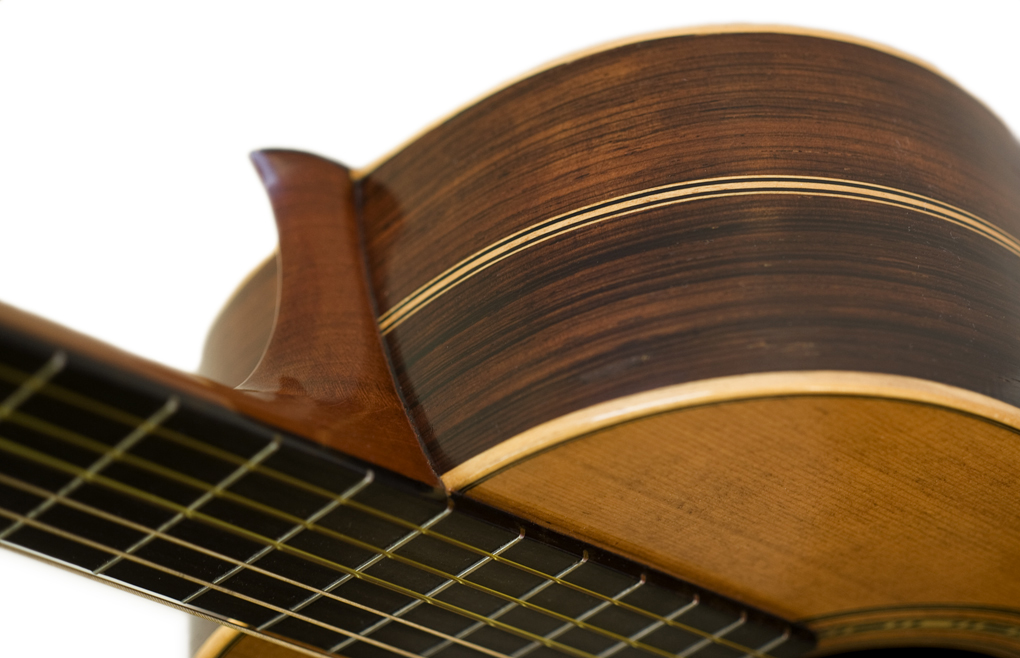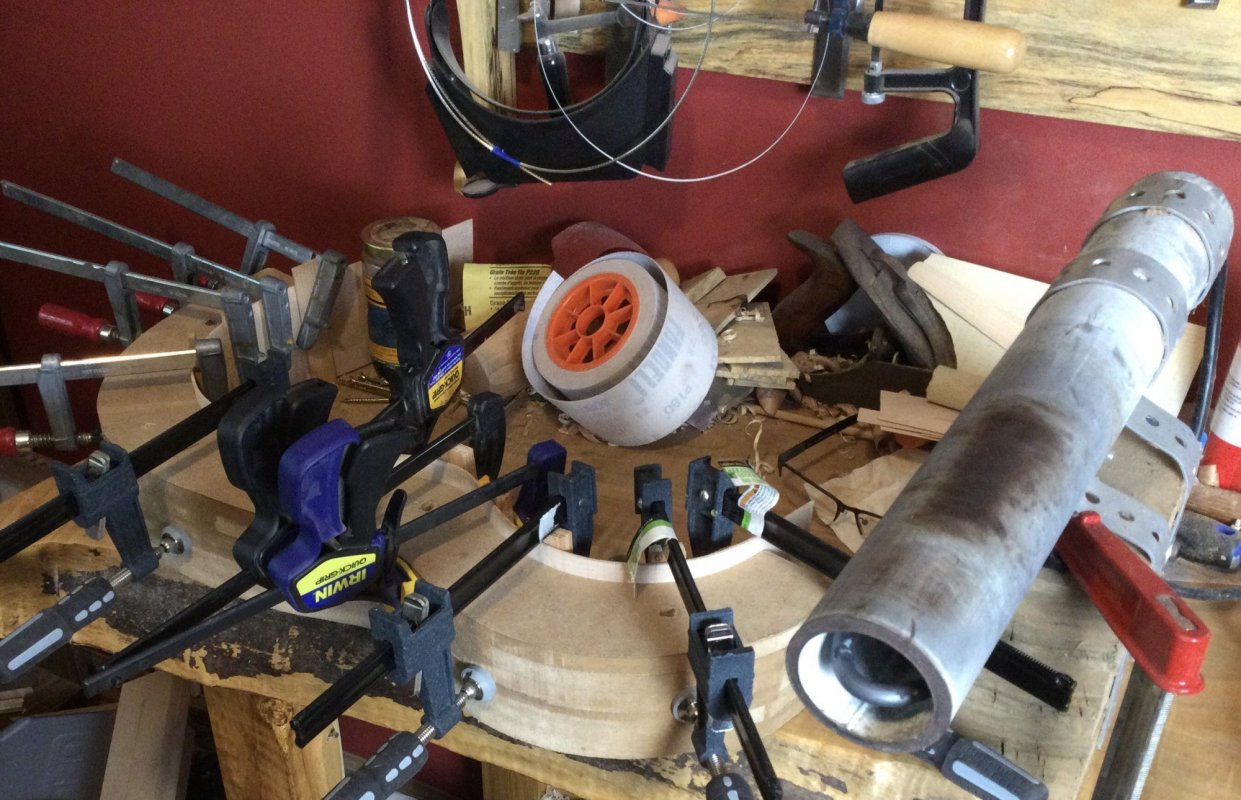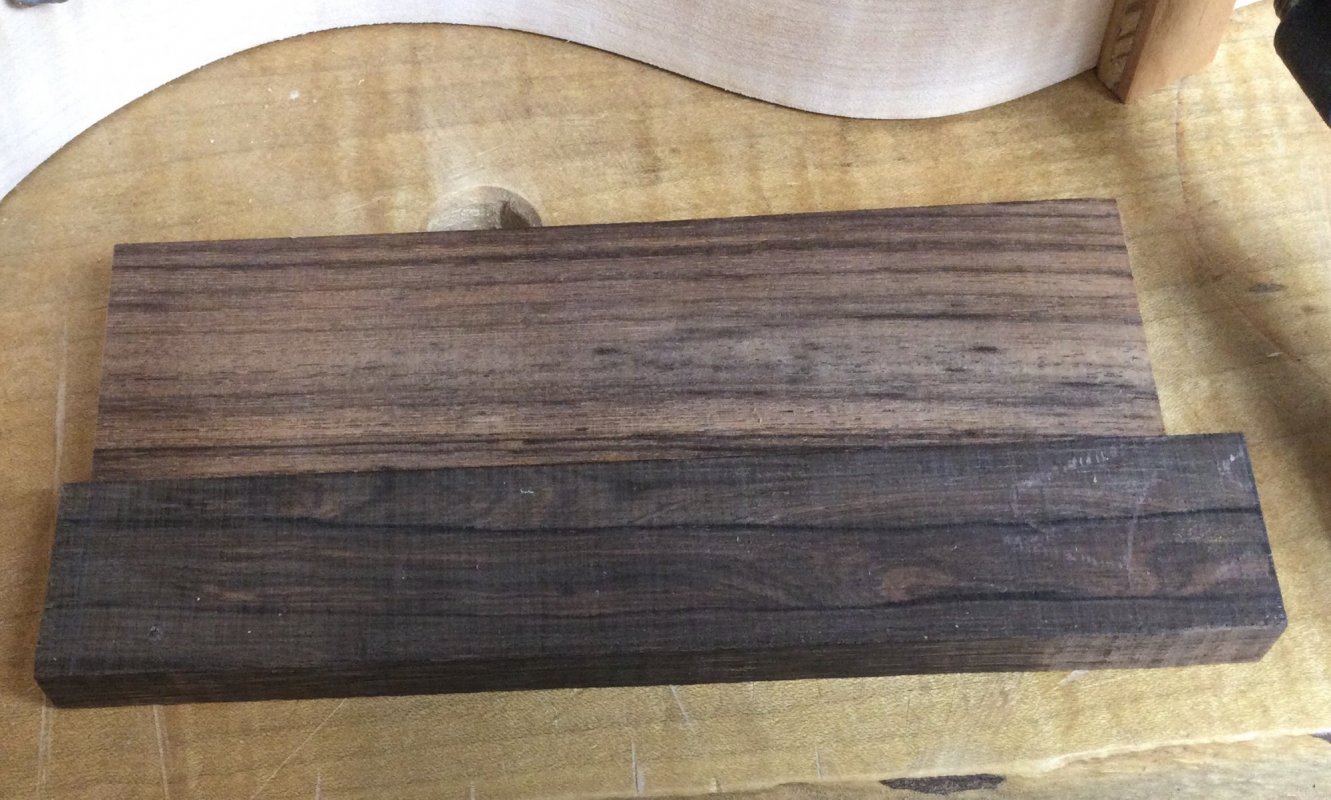AcornHouse
Venerated Member
Sides have been cut to size and thicknesses down to 1.8mm; ready for the bending iron. (I wiped a couple of spots with alcohol to bring out the figure.) Typical flamenco guitars use either cypress (flamenco blanca) or rosewood (flamenco negra) for their back and sides, but I opted for a less usual figured maple (which does have some precedence); not just for its looks, but for its dry, sharp, powerful sound, which I think compliments the flamenco ideal.








